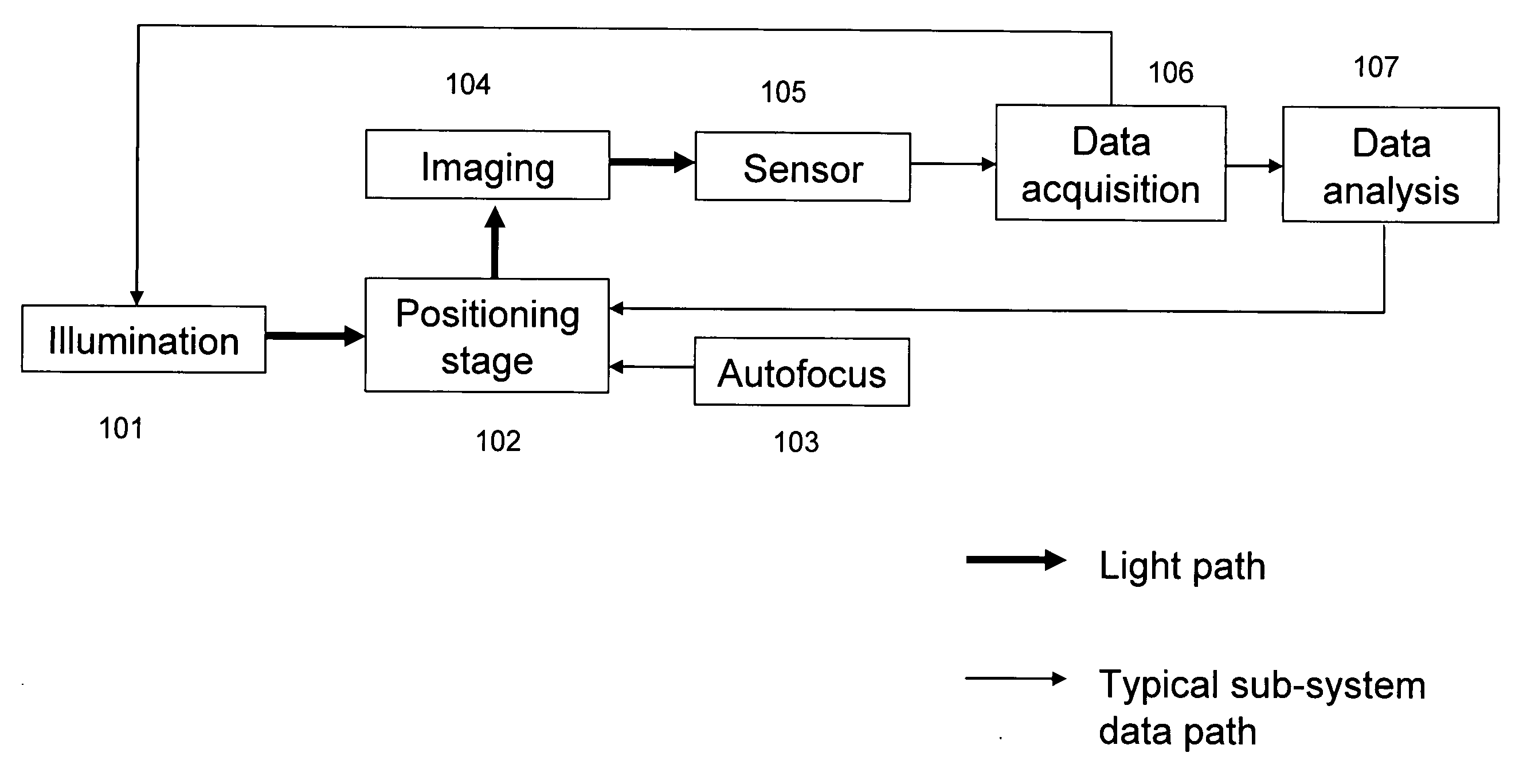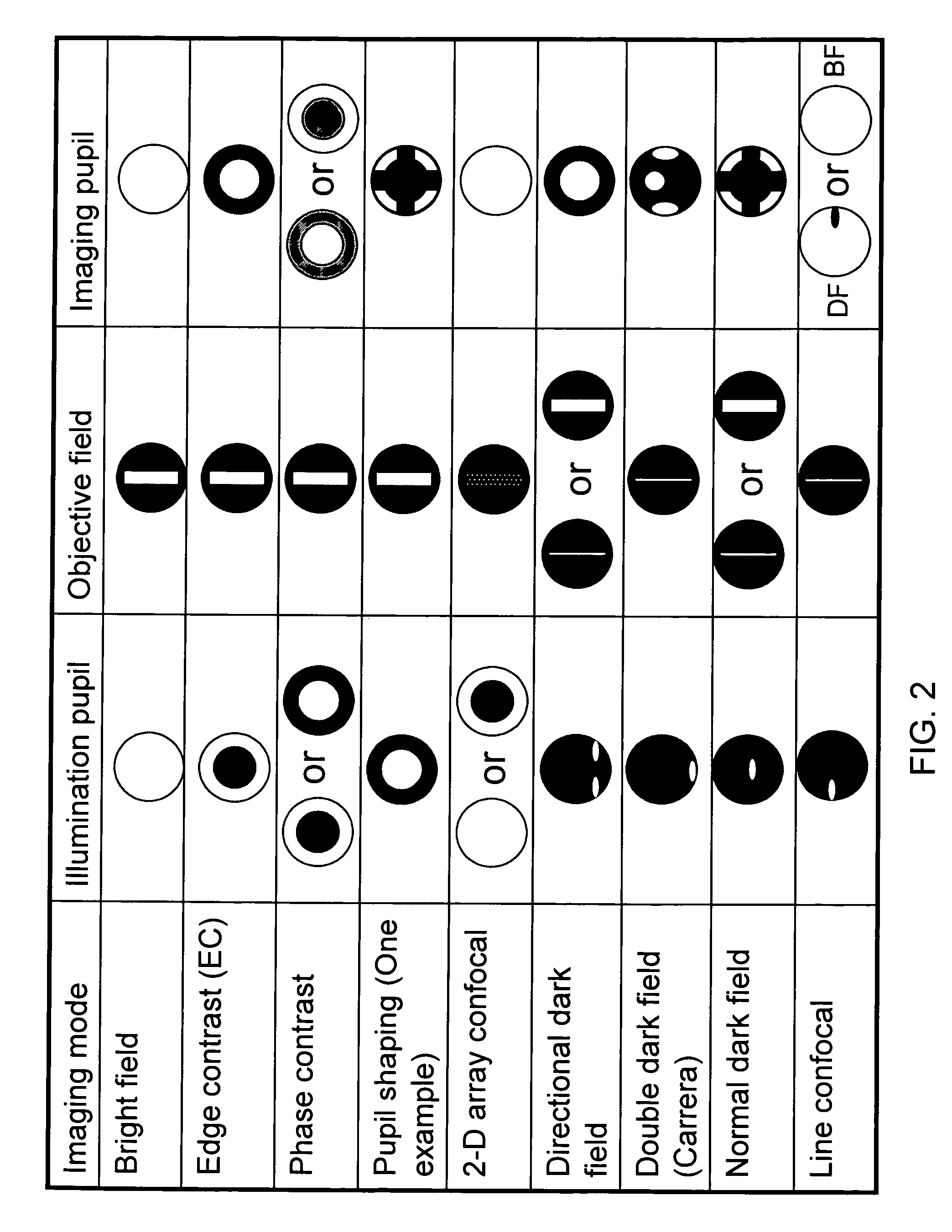Split field inspection system using small catadioptric objectives
a catadioptric objective and split field technology, applied in the field of optical imaging, can solve the problems of limited system based on refractive objectives, difficult design of uv objectives with nas (number of apertures) larger than 0.9, and limited catadioptric objectives
- Summary
- Abstract
- Description
- Claims
- Application Information
AI Technical Summary
Problems solved by technology
Method used
Image
Examples
Embodiment Construction
[0019]The inspection systems currently available are highly complex, requiring a sophisticated combination of light source, illumination, imaging, positioning, automatic focusing, image sensor, data acquisition, and data analysis subsystems. New optical designs can enable new inspection system architectures with improved performance, features, and flexibility.
[0020]The development of small sized catadioptric objectives that support ultra-high NA narrow band imaging has enabled improvements to existing inspection system architectures. Use of small objectives enables shorter wavelength inspection than possible using standard refractive based systems. The ultra-high NA designs enable a range of different inspection modes to be implemented as well as allowing different inspection modes to be used simultaneously. In addition, the ultra-high NA provides reduced interference effects from multiple layers on samples and increases the available light for faster inspection speeds.
[0021]An insp...
PUM
 Login to View More
Login to View More Abstract
Description
Claims
Application Information
 Login to View More
Login to View More - R&D
- Intellectual Property
- Life Sciences
- Materials
- Tech Scout
- Unparalleled Data Quality
- Higher Quality Content
- 60% Fewer Hallucinations
Browse by: Latest US Patents, China's latest patents, Technical Efficacy Thesaurus, Application Domain, Technology Topic, Popular Technical Reports.
© 2025 PatSnap. All rights reserved.Legal|Privacy policy|Modern Slavery Act Transparency Statement|Sitemap|About US| Contact US: help@patsnap.com



